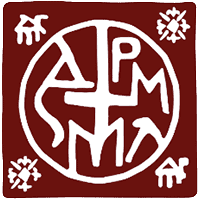The project focuses on the archaeometric research of the material components, the technology and the construction techniques of the two chryselephantine royal couches that were found in the unlooted tomb of Philip II at Aigai (modern named Vergina). The couches are unique ancient chryselephantine artifacts, they have been preserved intact and they are already branded as Masterpieces of the UNESCO’s World Cultural Heritage. The purpose of this project is to formulate innovative, non-destructive, material and technique, diagnostic protocols, to achieve the standard protocols of the final conservation of such materials, the reconstruction and the aesthetical restoration of the surviving parts of the ancient artifacts, and finally to produce a thorough, complete, three-dimensional digital representation of the furniture in their functional totality, as well as the interactive stages of their construction. Τhe project contains an ‘’open-lab” workshop, both concerning the interaction of local groups of interested audiences, attending the procedure through mega screens, and a worldwide audience via a bilingual, Greek and English, internet site. The use of mega screens instead of the actual presence of the groups during the procedure is necessary due to the special nature of the material (ivory, gold, glass, organic elements such as leather, wood, fabric, etc.) that are extremely precious and extremely vulnerable, and they are protected in a specially designed, area with monitored conditions of the temperature, lighting and humidity. Both, the diagnostic protocols and the protocols for conservation, reconstruction and aesthetic restoration can be used to manage similar findings as the fragments of ancient ivory and glass objects treasured in central museums worldwide (eg fragments of chryselephantine couch from Mieza at the National Archaeological Museum of Athens).
Regarding the archaeometry, the application of advanced tomographic techniques (acoustic microscopy and optical profilometry) can reveal the roughness and other qualitative characteristics of the surface and the possible deeper layers in micrometer scale. Also, combined with tomographic techniques, the application of vibrational spectroscopies (infrared (IR) and Raman), ultraviolet and visible spectroscopy and x-ray fluorescence spectroscopy (XRF) can identify materials, colour and chemical elements, respectively. It is worth to mention that the innovation in the proposal does not correspond to the techniques themselves, but to the special design that will take place in order to satisfy the complex requirements demanded from the special nature of the cultural heritage object, which have to be studied in a specially designed protected area of the archeological lab. Moreover, special measurement probes will be designed and developed to be able to reach difficult access points on the objects, for instance the inlay of the small glass elements located in the slopes of ivory tiles. Furthermore, the archaeometric information combined with the archaeological research will guide to full reconstruction of the under investigation couches. The procedures of the diagnosis, the documentation and the reconstruction will be recorded and the corresponding audiovisual material will be presented in a specially designed educational area in the archaeological laboratory (open lab), as well as in other areas in the Polycentric Museum of Aigai and on the internet in a specially designed web-platform. Texts, figures and archaeometric results, which describe all procedures and stages of the project, along with the results of the final digital 3D reconstruction will be accessible for both the general and specialized audience, whereas, parts of ancient findings which will be studied during the project will be conserved and will be restored in order to be exposed in Polycentric Museum of Aigai.
Regarding the archaeometry, the application of advanced tomographic techniques (acoustic microscopy and optical profilometry) can reveal the roughness and other qualitative characteristics of the surface and the possible deeper layers in micrometer scale. Also, combined with tomographic techniques, the application of vibrational spectroscopies (infrared (IR) and Raman), ultraviolet and visible spectroscopy and x-ray fluorescence spectroscopy (XRF) can identify materials, colour and chemical elements, respectively. It is worth to mention that the innovation in the proposal does not correspond to the techniques themselves, but to the special design that will take place in order to satisfy the complex requirements demanded from the special nature of the cultural heritage object, which have to be studied in a specially designed protected area of the archeological lab. Moreover, special measurement probes will be designed and developed to be able to reach difficult access points on the objects, for instance the inlay of the small glass elements located in the slopes of ivory tiles. Furthermore, the archaeometric information combined with the archaeological research will guide to full reconstruction of the under investigation couches. The procedures of the diagnosis, the documentation and the reconstruction will be recorded and the corresponding audiovisual material will be presented in a specially designed educational area in the archaeological laboratory (open lab), as well as in other areas in the Polycentric Museum of Aigai and on the internet in a specially designed web-platform. Texts, figures and archaeometric results, which describe all procedures and stages of the project, along with the results of the final digital 3D reconstruction will be accessible for both the general and specialized audience, whereas, parts of ancient findings which will be studied during the project will be conserved and will be restored in order to be exposed in Polycentric Museum of Aigai.
Contact Dr. Georgios Karagiannis, Ormylia Foundation, Scientific Director, g.karagiannis@artdiagnosis.gr
More information here: https://goldenivory.eu/
